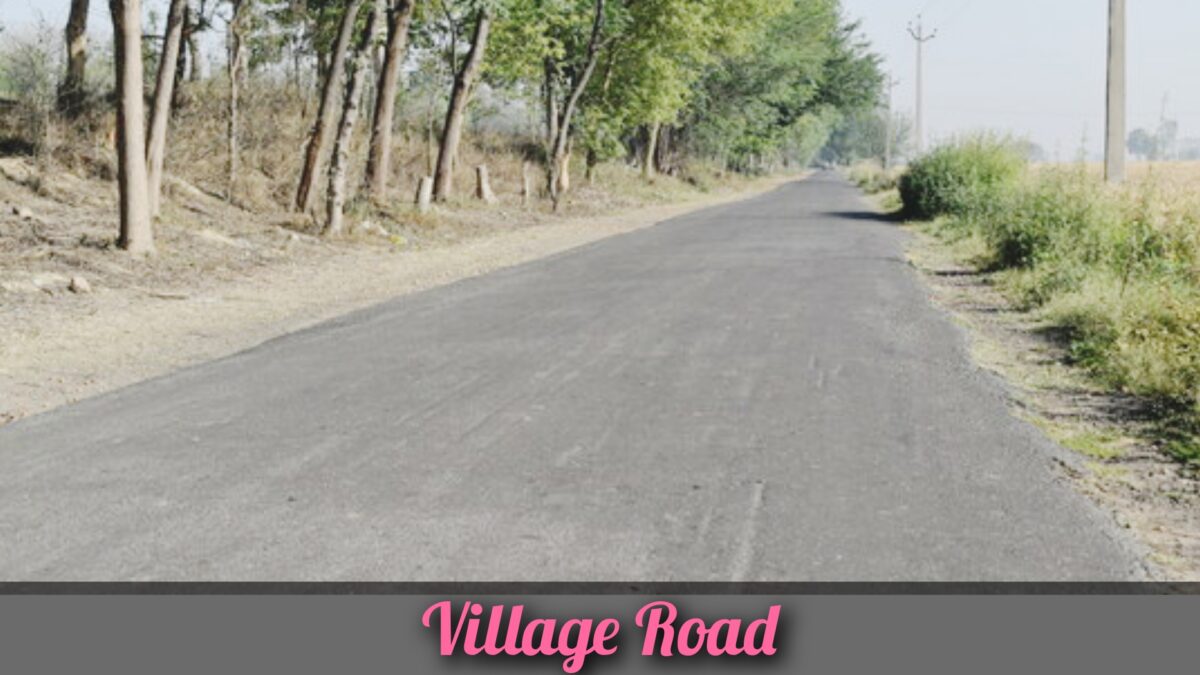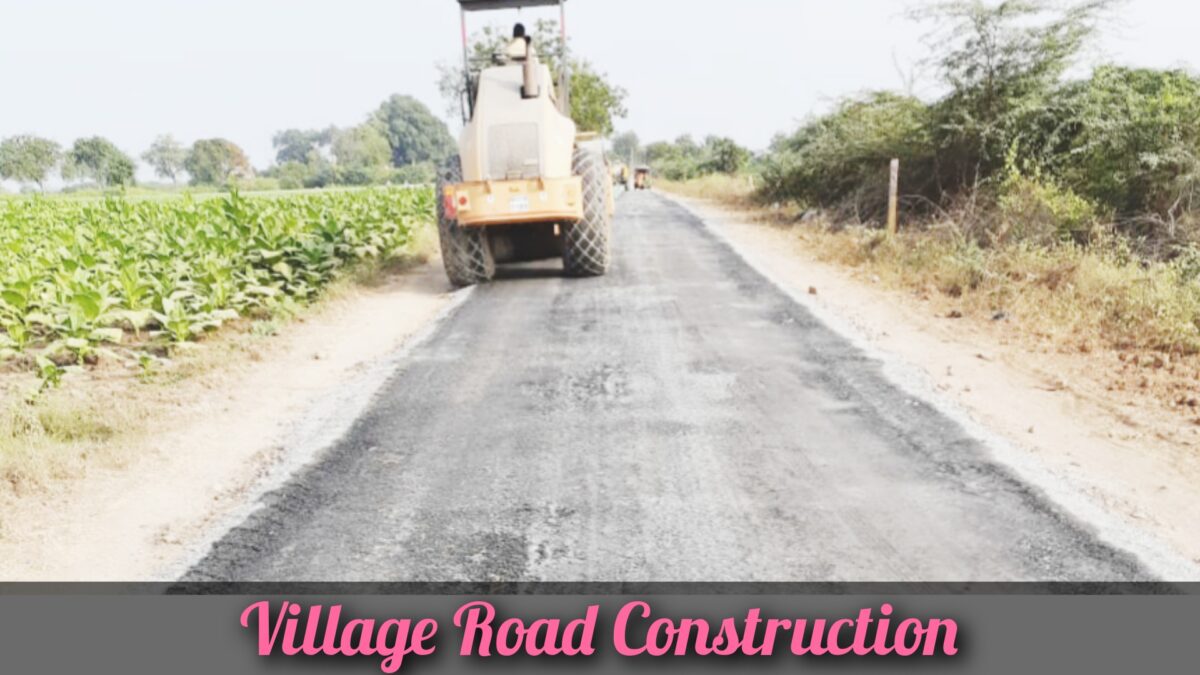Village road play a pivotal role in connecting and sustaining rural communities. These roads serve as the lifelines of small towns and villages, facilitating transportation, promoting economic activities, and enhancing social cohesion.

In this blog article, we will discuss into the essence and significance of village roads.
Table of Contents
What Is Village Road?
Village Road is a low-cost road constructed in rural areas using locally available materials. These roads are built with the aim of providing basic transportation infrastructure to rural communities.
The construction of village roads often involves utilizing resources found within the local area, such as locally sourced gravel or soil, to minimize costs.
These roads play a crucial role in connecting villages and improving accessibility for residents, enabling them to travel between their homes, farms, markets, and other essential facilities.
Village roads are suitable for low traffic and can be improved for high traffic.
Human civilization has included village roads for centuries, starting as footpaths and progressing into cart tracks that linked villages and facilitated trade and exchange. Improved transportation technology over time resulted in the creation of more advanced road infrastructure, connecting rural areas to urban centers. Recognizing the historical background of village roads allows us to comprehend their significance and development.
Properties Of Village Road
- Constructed using local available materials
- Easy conversion into a concrete road if necessary
- First stage of road construction
- Utilizes local manpower for construction
- Primarily used for village roads
Steps Of Village Road Construction
1. Investigation And Planning:
During this stage, we determine the purpose and goals of the road construction project, assess the community’s needs, and identify potential funding sources.
2. Design Considerations:
This stage involves creating a detailed plan for the road construction project, taking into account the area’s topography, traffic volume, and drainage requirements.
3. Procurement
In this stage, we acquire the necessary materials and hire the labor required to construct the road. This may include obtaining asphalt, concrete, excavation equipment, and workers.
4. Execution:
This stage involves building the road. It includes tasks such as excavation, grading, laying the road base, laying the asphalt or concrete surface, and installing drainage features.

5. Maintenance:
Regular road inspections are conducted during this stage to ensure the road remains in good condition and is safe to use.
Maintenance tasks may include patching potholes, repairing cracks, and replacing damaged road sections.
Challenges In Village Road Construction
It’s difficult to get enough money from the government to develop and maintain village roads because they are in rural areas.
Villages need more things like tools, materials, and skilled workers to make and keep their roads nice.
Making and taking care of roads needs special skills and knowledge that some rural communities don’t have.
Village roads are often in places where bad things like floods, landslides, and earthquakes happen. These disasters can break the roads and make it tough to fix them.
It’s important to regularly fix and take care of roads, but it’s hard to do that all the time in rural areas because of money and other things.
Village roads are usually far away and not easy to get to. This makes it difficult to bring things like tools, materials, and workers to fix the roads.
It’s important to get people in the village to help make and take care of their roads. But it’s not always easy to get rural communities to do that.
Advantages Of Village Roads:
- Village roads help connect villages to towns and cities, making it easier for people, goods, and services to travel between them.
- With better roads, people in villages can easily reach schools, hospitals, markets, and job opportunities nearby.
- Improved roads support economic growth by helping farmers sell their crops, attracting businesses, and creating more job opportunities.
- Village roads bring people from different villages together, allowing them to meet, make friends, and share their cultures.
- When there’s an emergency, like someone getting hurt or a fire breaking out, good roads make it faster for ambulances and fire trucks to come to the rescue.
- Well-maintained village roads can attract tourists who want to explore rural areas, helping local businesses like homestays and shops thrive.
- With good roads, children in villages can easily go to school without facing difficulties on the way.
- Improved roads make it easier to transport medicines and doctors to villages, ensuring people can get the healthcare they need.
- Good village roads make it easier for farmers to transport their crops to markets, helping them sell their produce and earn more money.
- Village roads contribute to the overall development of a village, including access to electricity, water, and communication networks.
Disadvantages Of Village Roads:
- Village roads can be difficult to maintain properly, leading to problems like potholes and erosion, which make traveling on them bumpy and inconvenient.
- Some village roads may not be wide enough, causing traffic jams and delays when many vehicles or big trucks need to pass through.
- During heavy rains, floods, or snowstorms, village roads can become impassable, making it hard for people and emergency services to get through.
- Constructing and keeping up village roads in remote areas can be costly because of tough terrain and the need for specialized equipment and skilled workers.
- Building village roads can harm the environment, causing problems like deforestation, disturbing animal habitats, and more pollution from vehicles.
Faqs
If you encounter road maintenance issues on Village Road, such as potholes, signage problems, or debris, you can typically report them to the local village authorities or the relevant department responsible for road maintenance. They may have a dedicated hotline, online form, or email address where you can submit your report.
Speed limits on Village Road are typically determined by local traffic regulations and can vary from village to village. In most cases, there are designated speed limits in place to ensure the safety of all road users. Look for speed limit signs along Village Road or consult local traffic authorities for specific information regarding speed limits in the village.
Certain villages may have restrictions on the entry or passage of commercial vehicles on Village Road, especially if the road is narrow or primarily residential. These restrictions aim to minimize congestion and maintain the tranquility of the village. It’s advisable to check with local authorities or refer to any posted signs regarding commercial vehicle restrictions on Village Road.
Parking regulations along Village Road depend on local policies and the availability of designated parking spaces. Some villages may have designated parking areas or on-street parking zones, while others may have restrictions in place to maintain traffic flow or preserve the aesthetic appeal of the road. Look for parking signs or check with local authorities for specific parking rules along Village Road.
To stay informed about community events or road closures on Village Road, you can subscribe to local village newsletters, follow their social media accounts, or visit the village’s official website.
